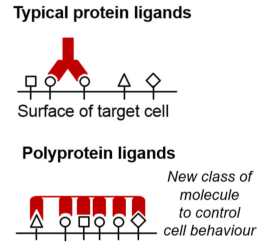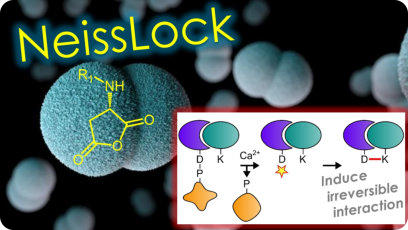HOWARTH LAB

SOCIAL
ADDRESS
Department of Pharmacology,
University of Cambridge,
Tennis Court Road,
Cambridge
CB2 1PD
UK
CONTACT
e: mh2186@cam.ac.uk
t: 01223 334176
2025 Mark Howarth. All rights reserved.
The theme of our research is Innovating Protein Technologies for Therapeutics and Vaccine Design. We have a number of project areas
running in the lab, ranging from fundamental analysis of protein interactions through to clinical application. The lab is also enthusiastic
about entrepreneurship, supporting team members to develop the potential of the new technologies that they develop.
Immuno-engineering and Global Health
Developing an effective vaccine may be the most effective way to improve human health. We have established an approach to
accelerate vaccine development, through our Plug-and-Protect platform. A limiting factor in vaccine generation is the difficulty of
turning a promising target protein into the kind of assembly that would give long-lasting disease protection. We showed rapid and
efficient decoration of virus-like particles, which elicited a strong immune response even with only a single injection. We demonstrated
potent immunization towards the global health challenge of malaria, working with collaborators at Oxford University’s Jenner Institute.
This approach is now being used by many groups against cancer and various infectious diseases, e.g. HIV, influenza, outbreak
pathogens, and veterinary diseases. Tag/Catcher vaccine technology has progressed to Phase 3 clinical trials for Covid-19, with clinical
trials for CMV and malaria under way. Our lab’s current focus is to create new protein antigen and nanoparticle designs to achieve the
most potent and broadly protective immune responses. We are working to enhance mucosal immunity, as well as to protect from
gastric cancer. We have ongoing collaborations with Oxford, Caltech, University of Buea Cameroon and the NIH to develop a
subsequent generation of vaccine systems, to enable protection against the most challenging diseases.
A New Generation of Protein Interactions: Superglues from Bacteria
We have harnessed an amazing feature of the surface of the pathogenic bacterium Streptococcus pyogenes. This enabled us to form a
spontaneous isopeptide bond between genetically-encoded protein and peptide partners. This interaction is unbreakable, including
against high forces in biological systems (blood flow, cell migration, molecular motors). Our favourite pair, SpyTag with SpyCatcher, is
one of the strongest protein interactions ever measured. SpyTag is now being applied by hundreds of labs around the world for
diverse areas of basic research and biotechnology. SpyTag is about to enter clinical trials to enhance the targeting of CAR-T cell cancer
therapy. We have now developed interactions tunable by pH and light. With computational design and evolution through phage display
we created the first genetically-encoded interaction reacting at the diffusion limit and approaching infinite affinity. We are extending
this new class of protein interaction, to create novel possibilities for synthetic biology. SpyTag is providing a unique route to antibody
teams for combinatorial control of cell signalling, for more potent targeting of cancer.
Vaccine development:
Unique Protein Architectures for Cell Imaging and Therapy
Our studies on the limits of cancer cell capture from blood made clear that even the best antibody interactions are not good enough.
We have developed a new class of binding proteins that form covalent bonds to endogenous protein targets. NeissLock was
engineered from an adhesion system from Neisseria meningitidis and forms an anhydride in response to calcium, reacting irreversibly
with neighbouring proteins. Protein ligands that never let go of their targets should reduce the detection limit of soluble biomarkers
for early diagnosis. We are progressing NeissLock technology to generate long-acting therapeutics through hitchhiking on red blood
cells. We are also aiming to enhance CAR-T cell therapy of cancer, which has been revolutionary against leukaemia/lymphoma but has
had little success against solid tumours.
Gastrobodies for targeting in the gut
The gut is extremely effective at degrading proteins. This has prevented the use of antibodies or antibody mimetics for therapeutic
targeting in the gut. There are a huge range of bacterial/viral infections, cancers and autoimmune diseases where targeting within the
gut could give benefit. We harnessed a protein from soybean with exceptional resistance to the high hydrochloric acid and pepsin
concentrations of the stomach.
By computational design and evolution, we established a new antibody mimetic called the gastrobody. Gastrobodies could bind and
inhibit a C. difficile toxin important for disease progression. We are currently developing the opportunities from this new targeting
platform towards a range of applications in animal and human health.
Get in contact for further information about any of these projects, or to discuss the possibility of working on other projects in the area
of synthetic biology / vaccines / cancer biology.













































